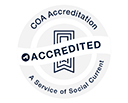Protecting Children from Domestic Violence
What is domestic violence
Domestic violence is physical abuse, harassment, intimidation or interference with personal liberty by a current or former spouse or domestic partner. The perpetrator's goal is to establish or maintain power and control over the victim. The perpetrator wants to control what you do, when you do it, who you see, what you think, your access to money, medication, transportation and more. The perpetrator's attempts to establish or maintain power and control come in many forms including, but not limited to, physical attacks and sexual abuse.
The scars left by psychological attacks are just as harmful. Psychological abuse can come in the form of verbal insults, mind games, humiliation, excessive criticism and living with the constant fear of physical attacks. Unfortunately, to maintain control of the victim, the perpetrator often uses the victim's children.
If you are a victim of domestic violence, your children are 15 times more likely to be abused themselves, and are more likely to die as a result of child abuse in the home. Abusive domestic partners oftentimes use children to establish or maintain power and control over the victim by physically, emotionally or sexually abusing the children. Domestic violence can be scary for the whole family, and especially for children who witness the abuse of their parent.
Angry arguments, yelling and hitting are traumatic to a child. To understand their anxieties, look at each situation through the child's eyes. If you see signs of childhood trauma - withdrawal, clinging, anger, indifference or fear - you can do something. For information about childhood trauma, including how to identify it, why it happens and how it can be prevented; bullying and how extreme bullying can lead to trauma in children; and links to agencies in Illinois that can help children who have experienced traumatic events, visit www.lookthroughtheireyes.org.
Even if your children are not physically abused, exposure to the trauma of domestic violence can cause long-term harm, including:
- Eating and sleeping disorders.
- Learning disabilities and poor academic performance.
- Verbally or physically aggressive behaviors.
- Feelings of guilt because they believe the domestic violence is their fault.
- Anxious or clingy behavior; or excessive crying in children under five.
- Alcohol and drug abuse in adolescents.
- Teen dating violence.
Thinking about safety
Victims of domestic violence cannot control or predict the behaviors or actions of their abusive partners. However, victims can develop a plan of what they can do to be safe and how they can access help when there is a crisis. It is important to talk to children about their concerns for safety. The link below provides information on how you can plan for the safety of you and your children.
Need help or want to know more?
If you need help, call the 24-hour, toll free, Illinois Domestic Violence Helpline at 877-863-6338. The Illinois Coalition Against Domestic Violence offers additional safety tips and an interactive map which outlines domestic violence service agencies by county.
For more information, refer to these publications:
How well do you know your partner handout: English Spanish French
Violence Prevention brochure: English Spanish French Hakka Chinese
You and Your Children Have a Right to be Safe from Abuse booklet: English Spanish Polish French Chinese
The National Center on Domestic and Sexual Violence fact sheet Safety Tips for Victims of Domestic Violence
Little Eyes, Little Ears: How violence against a mother shapes children as they grow


 312-814-6800
312-814-6800